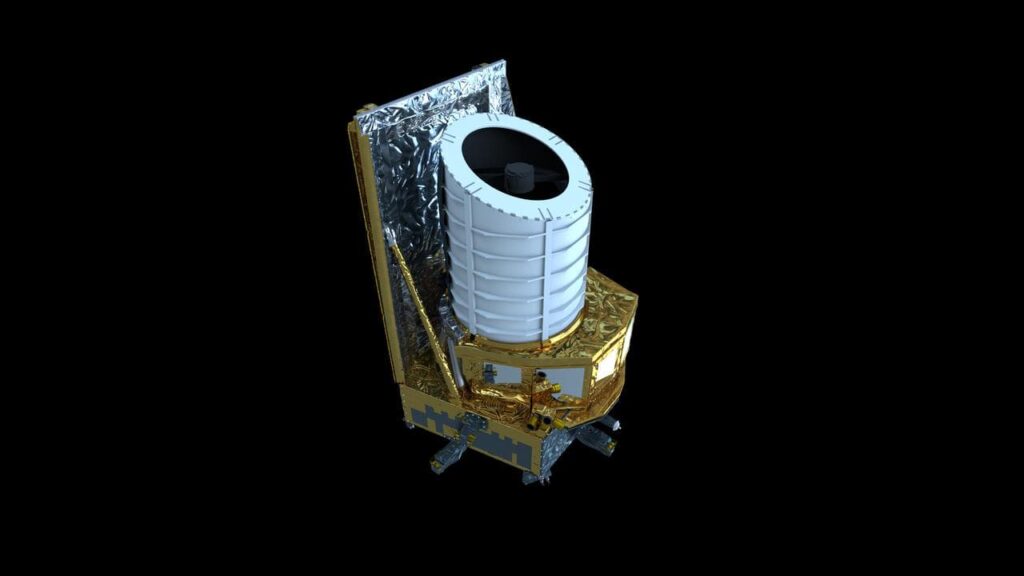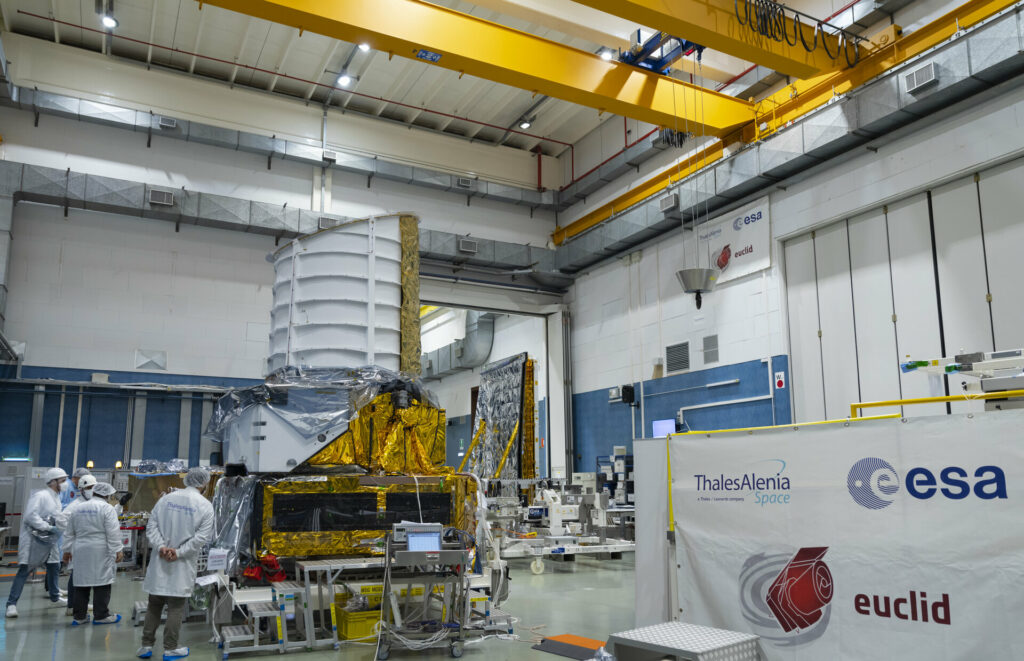Employees of Thales Alenia Space have successfully connected the two main components of the Euclid telescope — the service module and the payload module. In the near future, a heat shield, solar panels and an antenna will be installed on the device, after which it will pass final tests and be delivered to the launch site.
Euclid Telescope Tasks
The Euclid telescope is designed to study the history of the expansion of the Universe, the formation of its large-scale structures, the distribution of mysterious dark matter and dark energy. To do this, it will carry out high-precision measurements of the redshifts of distant galaxies (within a radius of up to 10 billion light-years from the Milky Way). Updated data on the connection between redshift and distance will help astronomers better understand how the Universe acquired its current form.

To complete the tasks, Euclid received a 1.2-meter mirror. The scientific filling of the device is represented by two instruments: Visible Imaging System (VIS), as well as a spectrometer and a near-infrared photometer (NISP).
Assembling the Euclid telescope
The assembly of Euclid began in 2020. After installing the instruments, the payload module successfully passed a number of tests that demonstrated its ability to withstand the conditions of space flight. The service module also passed similar tests. After that, at the end of last year, they were delivered to the Thales Alenia Space enterprise for final assembly.

After successfully connecting the two main Euclid modules, engineers are preparing to install all the remaining components on the device. This is a heat shield, solar panels and a high-gain antenna. After that, Euclid will undergo a series of final tests, and then it will be prepared for transportation to the Kourou cosmodrome in French Guiana.
Currently, the launch of the telescope is scheduled for 2023. It will be launched into orbit around the Lagrange point L₂ of the Sun-Earth system using an Ariane 6 rocket.
You can also read about an interesting experiment in which astronauts will try to create a lens in space.
According to https://www.esa.int
Follow us on Twitter to get the most interesting space news in time
https://twitter.com/ust_magazine
